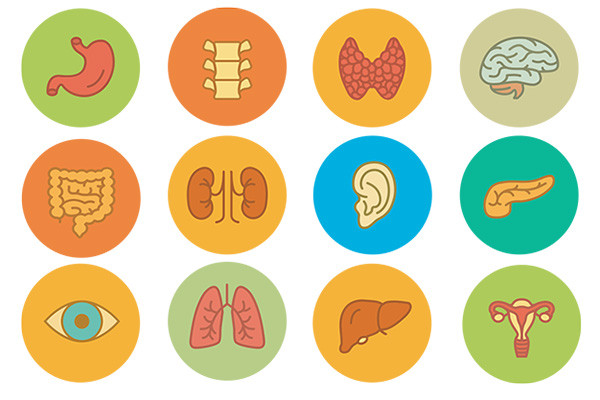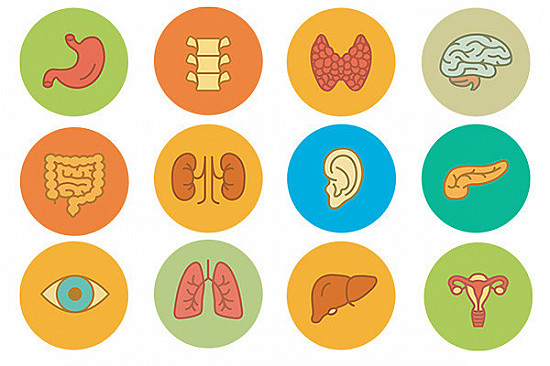
There was a time when pediatricians routinely recommended tonsil removal, even for healthy children — including me. As far as I can tell, I suffered no ill effects — plus, I got extra ice cream!
That practice is no longer routine. But it does raise an interesting question: Why do we have body parts that can be safely removed? If they’re not needed, why do humans have them in the first place?
One theory is that these nonessential organs and glands once served important roles in the lives of our evolutionary ancestors but now represent anatomic remnants. For example, it was long thought that the appendix helped our predecessors digest food, but over thousands of years became obsolete. And some organs are supremely useful during certain stages of life, but then become expendable.
Seven (mostly) unnecessary body parts
Here are seven removable parts of the body:
Appendix
This organ is about the size of your little finger and hangs from the lower right side of your colon. For reasons that aren’t clear, this part of the intestinal tract sometimes becomes blocked, infected, or inflamed. Aptly enough, the word appendicitis means inflammation of the appendix. While it may settle down with antibiotic treatment, emergency surgical removal (an appendectomy) is often necessary.
Tonsils
A network of lymph nodes throughout the body is part of the immune surveillance system that helps trap dangerous invaders such as bacteria and viruses. Consider your two tonsils as larger, specialized lymph nodes watching out for these intruders. They are located at the back of the throat just to the sides of and behind the uvula, the dangling piece of tissue above them.
Now, removing the tonsils (a tonsillectomy) is only recommended for people with repeated bouts of bacterial throat infections such as strep throat, a condition common in children. Once removed, other lymphoid tissue, including the actual lymph nodes, can take over the job of the tonsils.
Adenoids
Situated in the back of the nose where the nasal passages meet the mouth and throat, adenoids are similar to tonsils. They can also become inflamed, infected, and swollen. So when the tonsils are removed, the adenoids are generally removed at the same time. The combined procedure is called tonsillectomy and adenoidectomy. As is true for the tonsils, other lymphoid tissue takes over when the adenoids are gone.
Gallbladder
The gallbladder sits just under the liver in the upper right part of the abdomen. It stores bile made in the liver and releases it into the digestive tract when needed to help digest fatty foods. The gallbladder may need to be removed (a cholecystectomy) if it becomes inflamed, a condition called cholecystitis. Most often this occurs due to infection or gallstones, which are a hardened collection of bile. In some cases, rest and antibiotics can control gallbladder inflammation so removal can be delayed or even avoided.
Uterus
This remarkable reproductive organ has a single purpose: to support fetal growth until birth. When necessary, the uterus can generally be removed (hysterectomy) without impairing health. Common reasons for removal include painful or excessive menstruation, benign growths called fibroids that cause pain or bleeding, or cancer.
Thymus gland
This small gland sits high in the upper chest behind the breastbone. In a fetus or newborn, it’s quite important in the development and maturation of the immune system. But adults can live well without it. Surgery to remove the thymus (a thymectomy) may be recommended if the thymus becomes cancerous, or if a person develops the autoimmune condition myasthenia gravis.
Spleen
Like adenoids and tonsils, the spleen is made up of lymphoid tissue. It filters the blood, removing infectious organisms, aging blood cells, and other abnormal cells traveling through the bloodstream. But sometimes the spleen becomes overactive and begins removing healthy cells.
For example, idiopathic thrombocytopenic purpura (ITP) may develop when platelets (clotting blood cells that prevent excessive bleeding) are removed from circulation. With few platelets left in the bloodstream, bruising and bleeding may be life-threatening. Although medications can help, removal of the spleen (a splenectomy) may be necessary. Or sometimes trauma to the spleen, especially after sports injuries and car accidents, causes internal bleeding, which may lead to splenectomy.
People who lack a spleen are more prone to certain infections, so if removal isn’t urgent, a number of vaccinations are recommended before splenectomy.
The bottom line
I’ve heard it said that at least half of all body parts are unnecessary. That’s a myth. But as with most myths, there is some truth to it: there are indeed many body parts that can be safely removed. That said, it’s generally best to avoid unnecessary surgery and keep the parts you were born with if you can.
Sure, you can survive and thrive despite having your appendix removed. But it’s worth keeping in mind that our understanding about so-called spare parts may change over time. The appendix is a good example: researchers have discovered that the appendix may play a role in immune development and stores “good bacteria” to repopulate the gut in case of future illness. And there is evidence that removing the thymus may slightly increase the risk of cancer, autoimmune disorders, and death.
Someday we may discover important functions for other body parts we now consider expendable. And maybe then I’ll wish I had my tonsils back.
